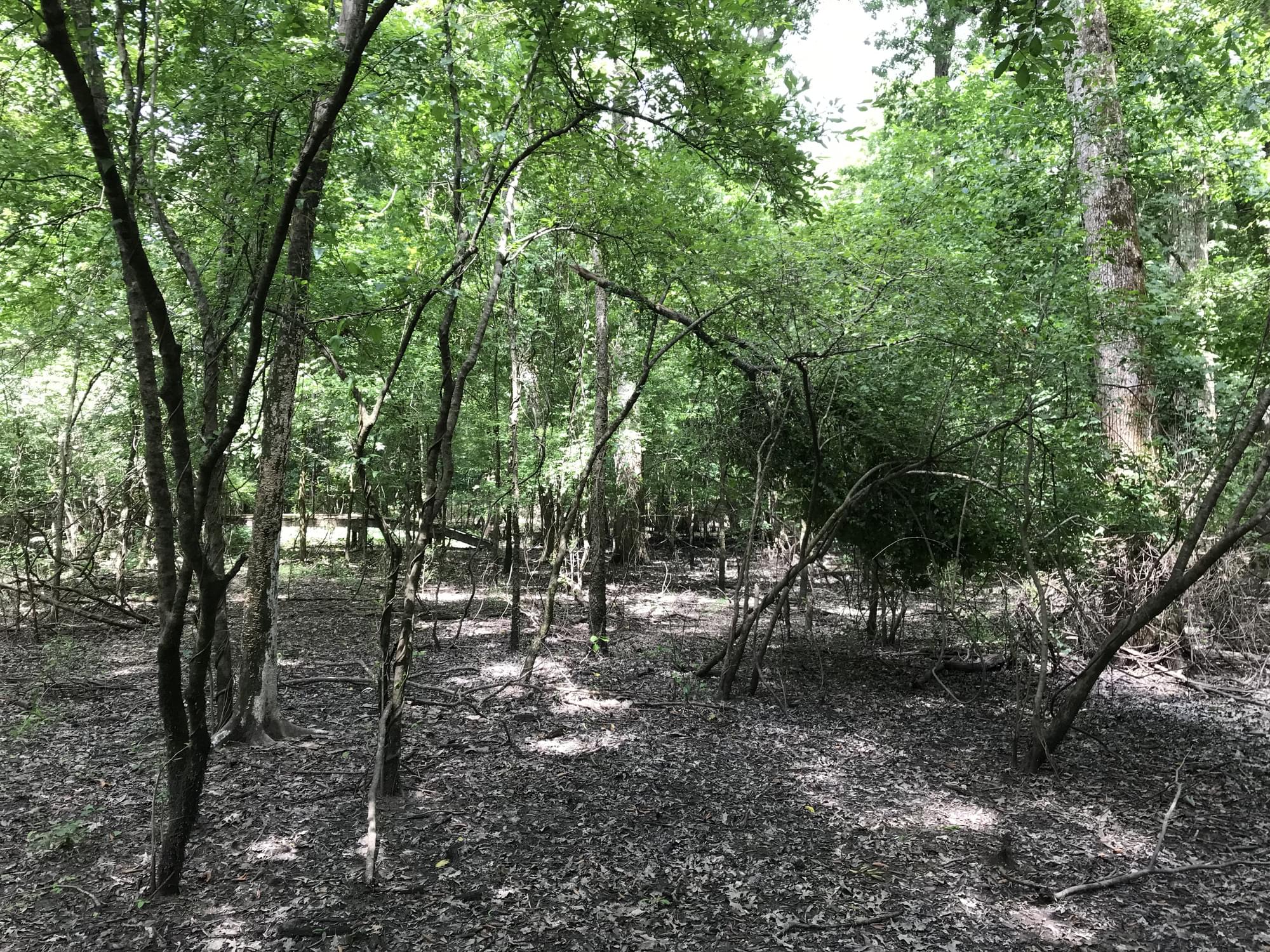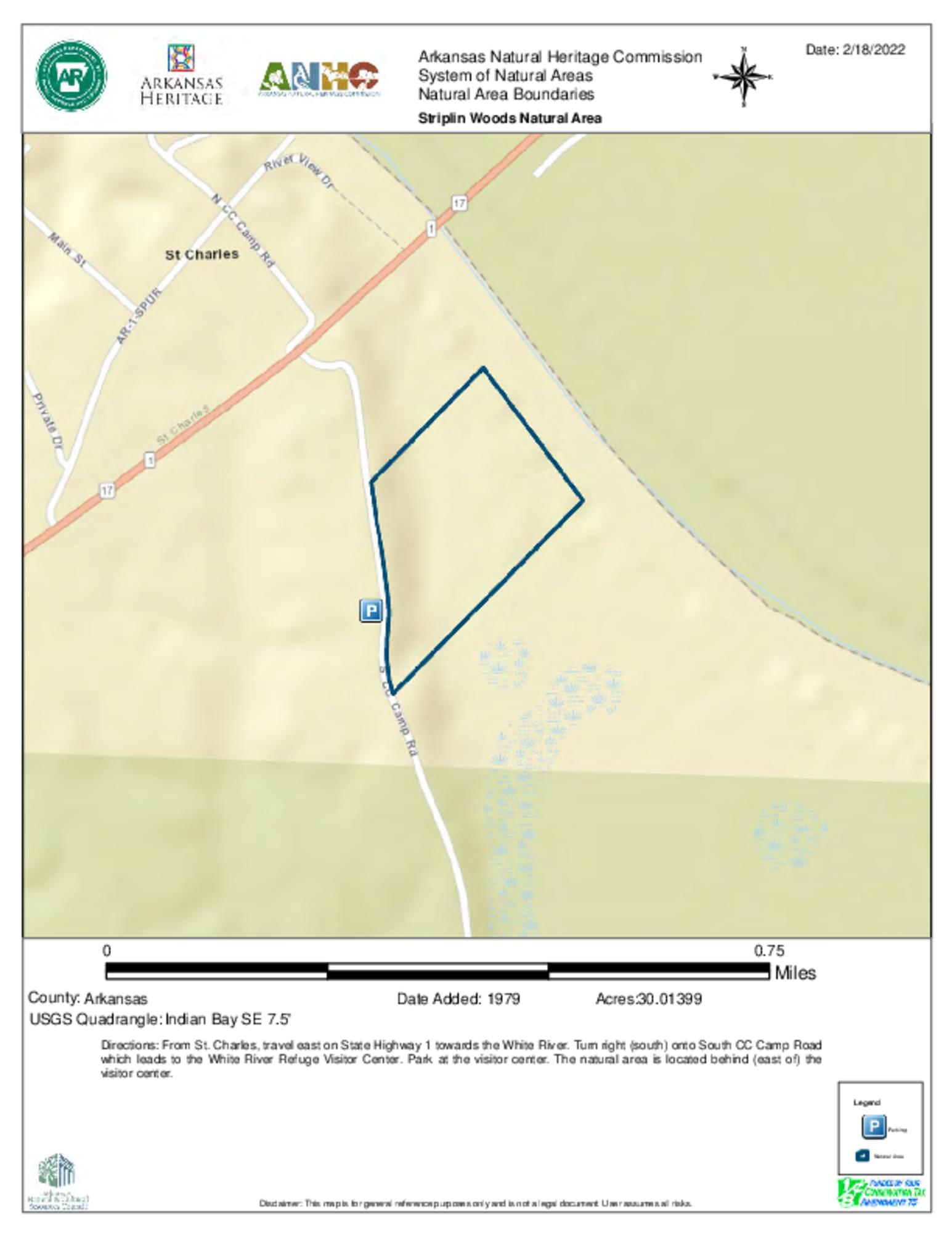Striplin Woods Natural Area

Striplin Woods Natural Area
Official WebsiteDale Bumpers White River National Wildlife Refuge Official Website
Dale Bumpers White River National Wildlife Refuge map
Cache-Lower White Rivers Important Bird Area webpage
About this Location
A forest long protected from human disturbance, Striplin Woods Natural Area displays considerable diversity over an elevational gradient extending from elevated river terrace down to the margin of the White River. Overcup oak forest occupies much of the floodplain that constitutes most of the tract. Water hickory, willow oak, and honey locust are the major associate species. A steep slope above the floodplain supports species more typical of upland forests. The canopy is high, and many of the trees exceed 24 inches in diameter. Located in the Mississippi Alluvial Plain of eastern Arkansas, Striplin Woods represents a small portion of the once extensive hardwood forests that occurred across this part of the state. With clearing for agriculture, much of this habitat type has been lost. Striplin Woods is a part of the White River National Wildlife Refuge and is co-managed with the U.S. Fish and Wildlife Service.
From St. Charles, travel east on State Highway 1 towards the White River. Turn right (south) onto South CC Camp Road which leads to the White River Refuge Visitor Center. Park at the visitor center. The natural area is located behind (east of) the visitor center.
About Dale Bumpers White River National Wildlife Refuge
See all hotspots at Dale Bumpers White River National Wildlife Refuge
Dale Bumpers White River National Wildlife Refuge was established on September 5, 1935 by President Franklin D. Roosevelt with the purpose to protect and conserve migratory birds and other wildlife resources. It is one of the most important areas for wintering waterfowl in North America. The refuge is home to the only population of native black bears in the state of Arkansas, and is designated as a Wetland of International Importance. Dale Bumpers White River NWR annually attracts approximately 455,000 visits from hunters, anglers, bird watchers, and others. The refuge lies within the floodplain of the White River, near where it meets the mighty Mississippi River. Long, narrow, and varying from a quarter mile to ten miles wide and approximately sixty miles long, the refuge is one of the largest remaining bottomland hardwood forests in the Mississippi River Valley. Its fertile forests and some three hundred lakes are interlaced with streams, sloughs, and bayous. These habitats are a haven for a myriad of native wildlife and migratory birds.
Notable Trails
The 1.6-mile Bottomland Hardwood Trail begins directly behind the refuge visitor'۪s center. The trail creates two loops and can be walked in either direction. Visitors will walk through exemplary bottomland hardwood forests full of old-growth trees. An elevated boardwalk, featuring four interpretive stations, gives visitors year-round access to flood prone habitat. Though the boardwalk may be closed during extreme high water, it is built to withstand these events. Four overlooks of the White River and three hand-made benches provide visitors an opportunity to rest and enjoy the view.
Features
Restrooms on site
Wheelchair accessible trail
Entrance fee
Roadside viewing
Content from Official Website and Dale Bumpers White River National Wildlife Refuge Official Website
 Arkansas Natural Heritage Commission
Arkansas Natural Heritage Commission Trail map
Trail mapArkansas Natural Heritage Commission